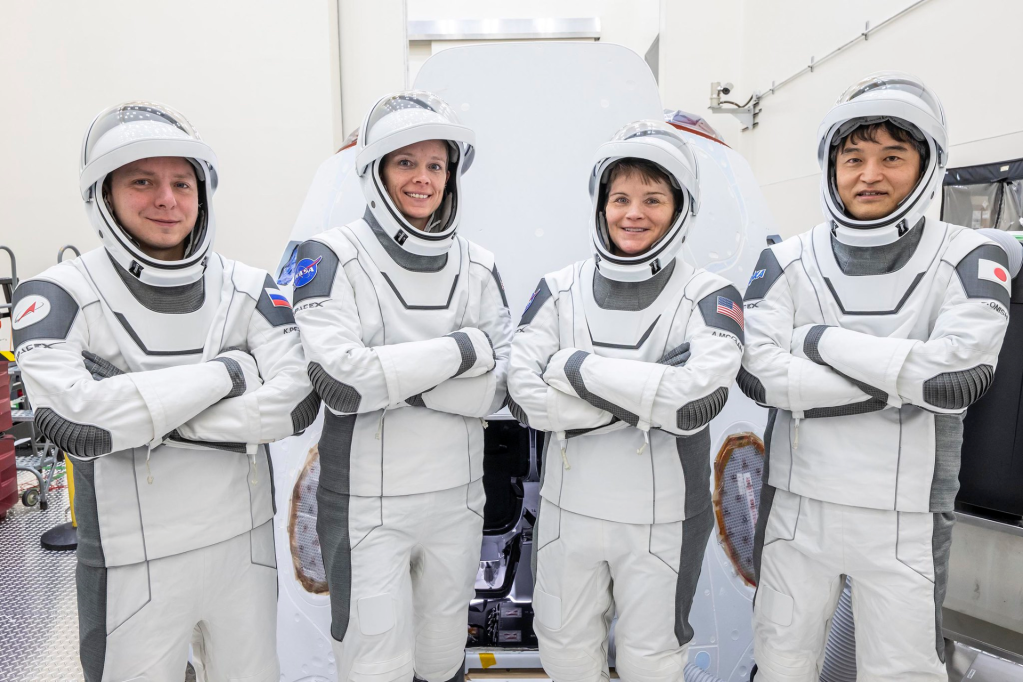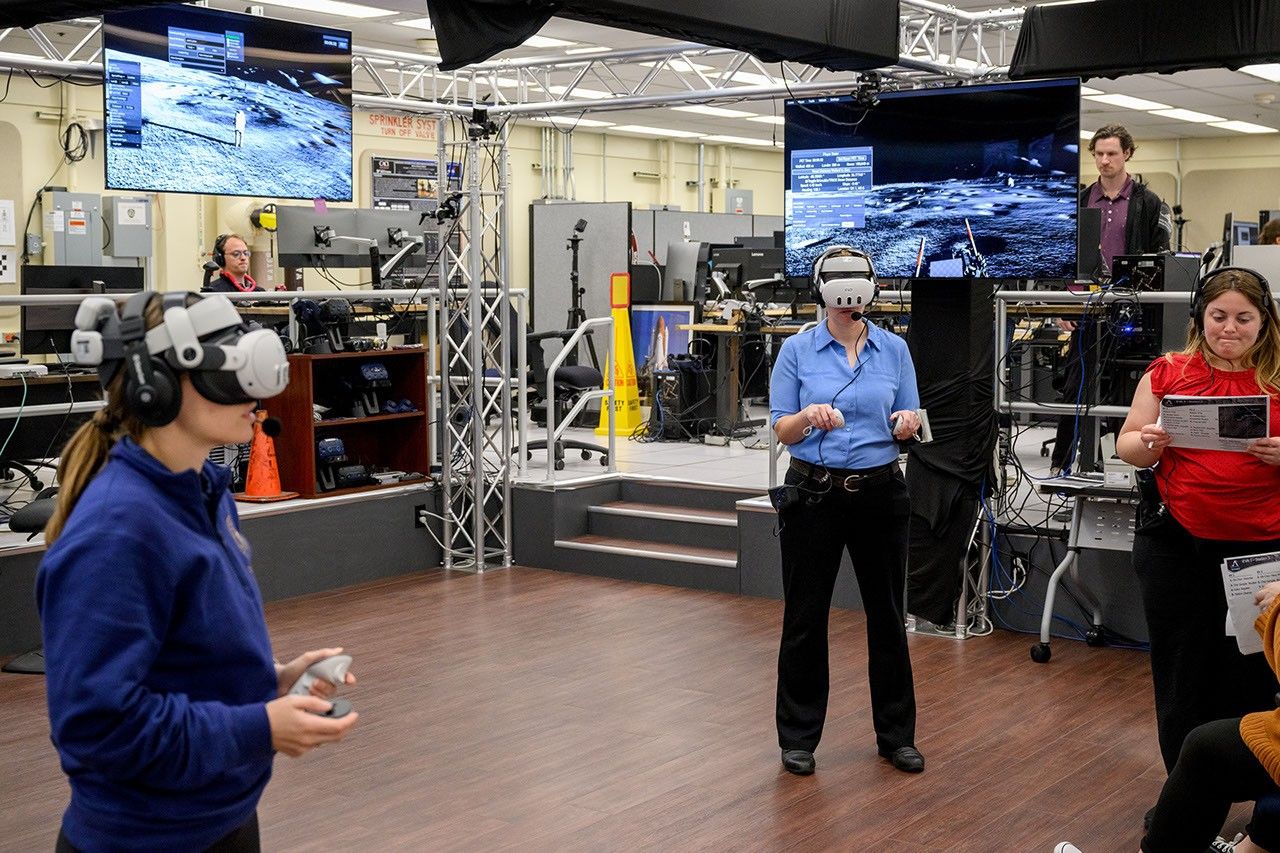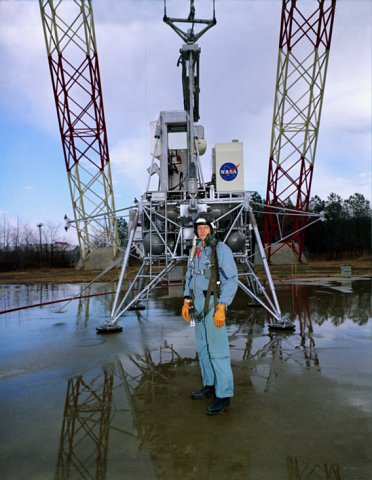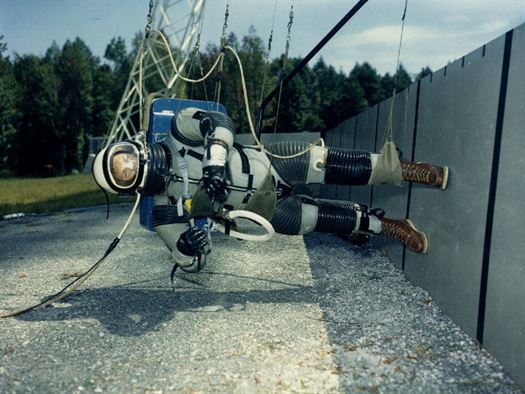The Lunar Landing Research Facility (LLRF) at the NASA Langley Research Center enabled Apollo astronauts to train to fly and walk in a simulated lunar environment. Built in 1965, the LLRF was a 400- by 230-foot A-frame structure with a gantry used to manipulate a full-scale Lunar Excursion Module Simulator (LEMS). The base of the LLRF was modelled with fill material to resemble the Moon’s surface. Twenty-four Apollo astronauts, including Apollo 11 crewmembers Neil Armstrong and Edwin “Buzz” Aldrin, spent many hours in the facility to practice piloting the Lunar Module in the final 150 feet of the descent to the lunar surface. Today, the LEMS is on display at the Virginia Air and Space Center in Hampton, Virginia.
The LLRF also served as a simulator for walking on the lunar surface. Suspended on their sides by slings and cables and walking parallel to the ground on an inclined plane, astronauts experienced what it would be like to walk in the 1/6-g lunar environment.
Experience gained by Apollo astronauts in the LLRF demonstrated that it was possible to master the complex tasks of landing and walking on the Moon. The facility played a critical role in achieving that goal before the end of the decade.
Between 1974 and 2003, the LLRF was renamed the Impact Dynamics Research Facility and used for research on aircraft crashes. It reopened in 2005 as the Landing and Impact Research Facility and with the addition of a hydro-impact basin has supported landing tests for the Orion Program.
In 1985, the LLRF was added to the US National Register of Historic Places and designated a US National Historic Landmark. For more on the LLRF, see https://www.nasa.gov/centers/langley/news/factsheets/Landmarks.html



























